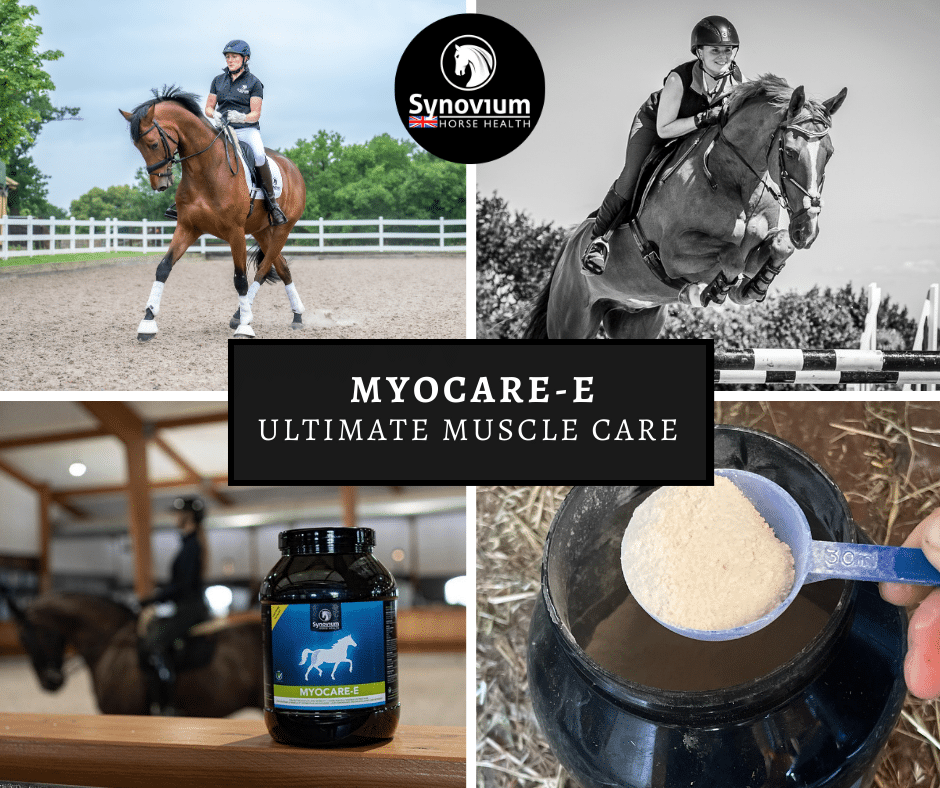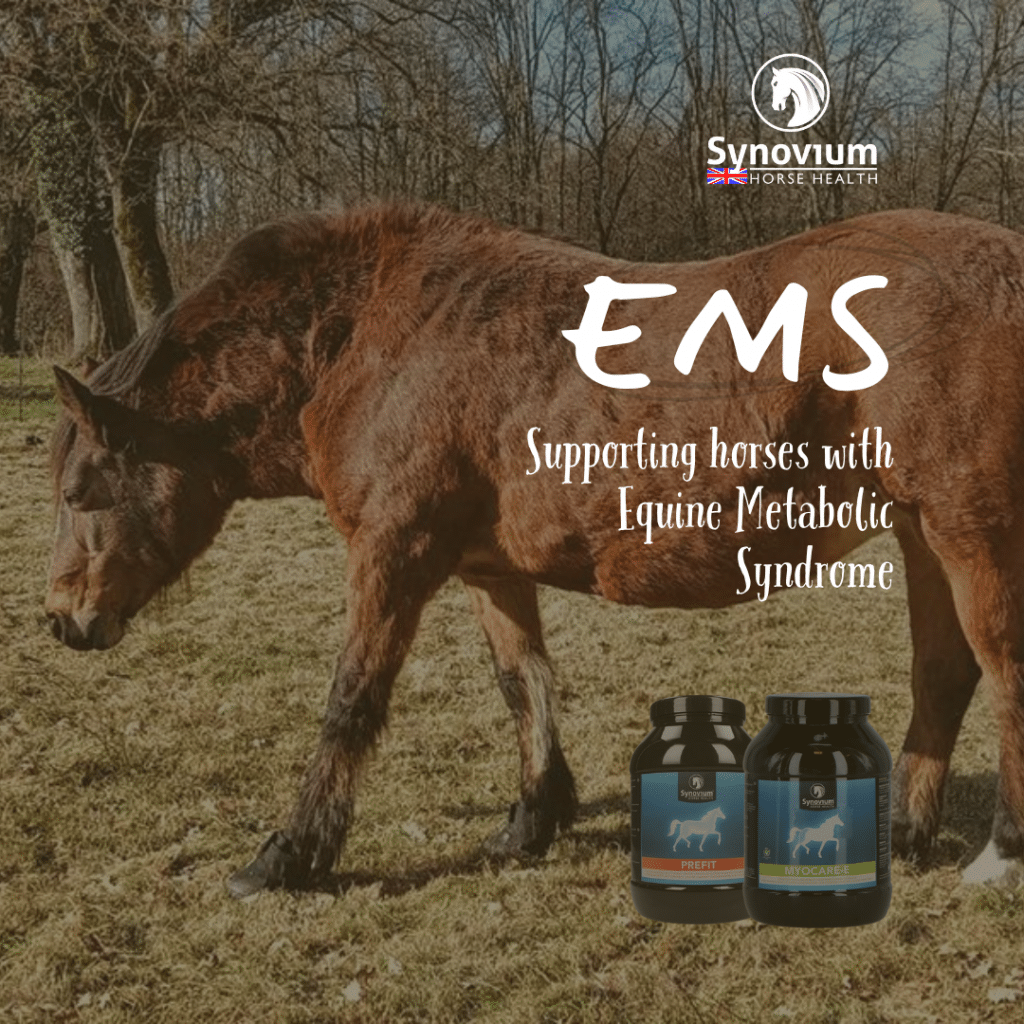Equine Metabolic Syndrome (EMS) is a syndrome that develops in the body due to a disturbed metabolism. In recent years, EMS has received increasing attention and more horses have been diagnosed with EMS. However, Equine Metabolic Syndrome is not a disease itself but rather a collection of multiple symptoms. The development of EMS is primarily caused by an imbalance between the horse’s energy requirements and energy intake from the diet. Therefore, providing an appropriate diet is crucial for managing horses with EMS.


Equine Metabolic Syndrome is a term used since 2002 for the physical symptoms caused by an impaired metabolism, which makes these horses more likely to develop Insulin Resistance (IR), obesity and laminitis 1.
Besides a dysfunctional metabolism, most horses diagnosed with EMS also suffer from a hormonal imbalance. An inappropriate diet is considered the main cause of the development of EMS, but more recent research suggests that the development of EMS may also depend on genetic factors in addition to the known environmental factors 2.
Insulin resistance and EMS

Body weight and Equine Metabolic Syndrome (EMS)
Laminitis and Equine Metabolic Syndrome (EMS)
Laminitis is a disease where an inflammation develops between the hoof wall and the coffin bone 10. The hoof capsule, the non-living part of the hoof protecting the soft tissue of the hoof, is connected to the hoof bone by soft tissue called laminae 10.
In severe cases, the laminae can become detached and cause the coffin bone to tilt and pierce through the sole of the hoof 11. In cases where the laminae become detached and the coffin bone tilts, this can no longer be treated.
The development of laminitis has multiple causes, but in the case of EMS, it occurs due to the inflammation caused by IR and obesity 12.
Besides, in horses diagnosed with laminitis, their feed usually contains excessive amounts of sugar and starch. When the feed is high in sugar and starch, the digestive system is unable to digest all of it completely.
As a result, some of it passes to the intestines where these nutrients are fermented 13. This process kills the beneficial bacteria present in the hindgut, disrupting the hindgut microbiome composition. When bacteria die off, they produce toxins that enter the bloodstream 10. These toxins can enter the hoof through the bloodstream, causing inflammation and ultimately leading to laminitis 10.

The Management of a Horse with EMS
When a horse is diagnosed with EMS, it is important to adjust their management to provide the horse with the right support and promote their health and well-being.
It is important to adjust management and prevent further health problems, especially when a horse has not yet developed symptoms like laminitis.
Currently, there is no treatment available to treat EMS. Reducing the amount of energy provided through the diet, especially starch and sugar, is one of the important adjustments to manage EMS 1.
This can be achieved by for example, reducing the amount of concentrate feed that is being fed. However, it is crucial for horses with EMS to consume sufficient roughage, and they should have access to 1.5% of their desired body weight in kilograms of roughage per day 1.
As mentioned earlier, it is important to reduce sugar and starch intake. It is therefore important to limit the amount of concentrate feed a horse receives daily due to its high sugar and starch content.
However, sufficient vitamins and minerals are important for maintenance and various processes in the horse’s body.
Therefore, it is recommended to supplement the horse’s diet with a vitamin and mineral supplement when reducing concentrate feed, so that the horse’s daily needs are still met.
Synovium Prefit is an ideal supplement for horses to provide them with essential vitamins and minerals when their concentrate feed is reduced. The supplement contains high-quality nutrients that are important for the horse’s body.
Synovium Myocare-E is essential to provide horses with EMS the natural vitamin e that is required by the horse from their diet, but maybe reduced due to reduced grass consumption and diet.
Providing the horse with sufficient roughage is important for its well-being and (intestinal) health.
However, it is recommended to select a type of roughage that is low in energy. Using a slow feeder/hay net allows horses to consume roughage at a slower pace and in smaller portions throughout the day.
To ensure that the horse has enough roughage throughout the day, it is recommended to split the total amount of roughage into several smaller portions.
It is not recommended to give horses with IR and EMS access to grass due to the difficulty in controlling the amount of fructan in the grass, even though it is also a type of roughage 1. To ensure horses are turned out enough, it is recommended to turn them out in a paddock with access to enough low-energy hay.

References
1. Frank, N., Geor, R.J., Bailey, S.R., Durham, A.E., Johnson, P.J. (2010) Equine Metabolic Syndrome. Journal of Veterinary Internal Medicine, 24(3):467-475.
2. McCue, M.E., Geor, R.J., Schultz, N. (2015) Equine Metabolic Syndrome: a complex disease influenced by genetics and the environment. Journal of Equine Veterinary Science, 35(5):367-375.
3. Morgan, R., Keen, J., McGowan, C. (2015) Equine metabolic syndrome. Veterinary Record, 177(7); 173-179.
4. Röder, P.V., Wu, B., Liu, Y., Han, W. (2016) Pancreatic regulation of glucose homeostasis. Experimental & Molecular Medicine, 48(3):1-19.
5. Kaczmarek, K., Janicki, B., Glowska, M. (2016) Insulin resistance in the horse: a review. Journal of Applied Animal Research, 44(1): 424-430.
6. Bertin, F.R., De Laat, M.A. (2017) The diagnosis of equine insulin dysregulation. Equine Veterinary Journal, 49(5):570-576.
7. Frank, N. (2009) Equine Metabolic Syndrome. Journal of Equine Veterinary Science, 29(5):259-267.
8. Morgan, R.A., Keen, J.A., McGowan, C.M. (2015) Treatment of equine metabolic syndrome: A clinical case series. Equine Veterinary Journal, 48(4):422-426.
9. Frank, N. (2011) Equine Metabolic Syndrome. Veterinary Clinics of North America: Equine Practice, 27(1):73-92.
10. Marcato, P.S., Perillo, A. (2020) Equine Laminitis. New insights into pathogenesis. A review. Large Animal Review, 26(6):353-363.
11. Laskoski, L.M., Valadão, C.A.A., Dittrich, R.L., Deconto, I., Faleiros, R.R. (2016) An update on equine laminitis. Clinic and Surgery, 46(3):547-553.
12. Johnson, P.J., Wiedmeyer, C.E., LaCarrubba. A., Ganjam, V.K., Messer, N.T. (2010) Laminitis and the Equine Metabolic Syndrome. Veterinary Clinics of North America:
Equine Practice, 26(2):239-255.
13. King, C., Mansmann, R.A. (2004) Preventing laminitis in horses: Dietary strategies for horse owners. Clinical Techniques in Equine Practice, 2004;3(1):96-102.
14. Freestone, J.F., Beadle, R., Schoemaker, R., Bessin, T., Wolfsheimer, K.J., Church, C. (1992) Improved insulin sensitivity in hyperinsulinaemic ponies through physical conditioning and controlled feed intake. Equine Veterinary Journal, 24(3):187-190.

